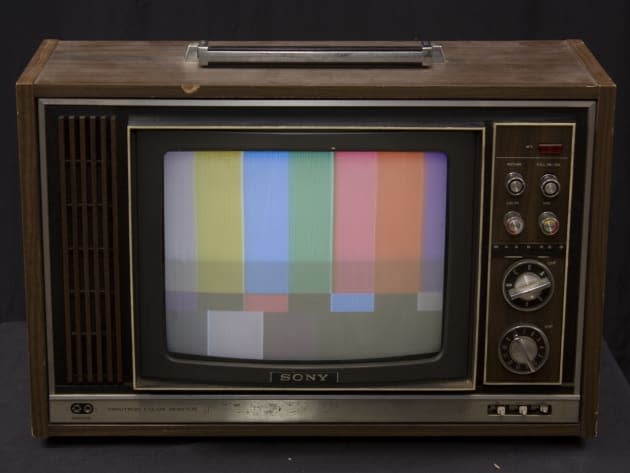Tube TVs, VCRs and magnets give 'Alien: Isolation' its signature look

From Halo to Dead Space and countless titles in between, the influence of the Alien franchise can be felt just about just about everywhere in video games. But hardly any of the releases starring the titular onyx xenomorphs actually capture aspects of what made Ridley Scott's beloved 1979 sci-fi flick so special -- a feeling that somewhere in space this could all actually happen. To do that, the team behind Alien: Isolation (out today for PC, PlayStation 3, PlayStation 4, Xbox 360 and Xbox One) had an altogether different plan of attack: a retro lo-fi aesthetic that limited them to not having any technology in the game couldn't have existed on-set in 1979. Achieving that took some creativity on the part of developer Creative Assembly, though. "Lo-fi didn't necessarily mean crappy," creative lead Alistair Hope tells us. "It's just that it's more of a stamp in time and an approach. We're doing sci-fi set in the future, but there's no sense that the crew on the Nostromo should be looking for a massive sci-fi gun... It's a disillusioned view of the future."
That approach means everything from futzing with 20th Century Fox's archives of sound effects from the original film, getting Sigourney Weaver back in the sound booth to rerecord Ellen Ripley's audio log that closes the movie and beating up analog video equipment to get the look and feel of the game's UI just right.

A 1970s-model Sony standard definition CRT television
Even with the wealth of sounds that 20th Century Fox provided access to -- including original foley recordings with sound designers shouting out take numbers -- the team still needed to create new material. "It's a movie that's 117 minutes long and we needed to generate hours and hours of new content," Hope says. That lead to another creative challenge: how do you match the source material's motifs and feel without betraying the feel of the 35-year-old film? One way is using an ARP Pro/DGX analog synth from the 1970s to help create new sound effects. Another is to record the imperceptible audio generated by electromagnetic waves from old TV screens and other electronics and to layer them into the game's soundscapes.
Where Isolation perhaps cleaves hardest from most modern depictions of older tech is in just how the development team went about capturing it. Hope says that the team had played with a few different digital ways to create the '70s warmth and texture and bring that into the game, but the results weren't what his team was after. Beyond including an adjustable film-grain filter tucked away in the options menu, they started experimenting with more physical ways to manipulate the game's visuals.

A bit more low fidelity tech: VHS tapes
Creative Assembly took parts of the game like the inventory selection menu and the scan-line-laden loading screens, transferred them to VHS tapes and played them back on SD tube TVs with "goldfish bowl" screens. Then, they recorded them and imported the footage back into their development workflow. "While we were filming them, we were crushing the cables and putting magnets around the TV to make it glitch and cause interference," Hope says. Those mangled assets are what gives the game its visual texture and what Hope refers to as a physical quality to the imagery. In the end, the effect resembles something along the lines of the schlocky found-footage horror flick V/H/S. "It wasn't quite what we were getting with the digital approach. When it's digital, it can quite often feel very cold and there was kind of a warmth to the frame in the original movie."
That warmth wasn't without a few casualties, though. "We managed to kill quite a bit of equipment doing that," Hope says, laughing. "I think we broke two VCRs and at least two TVs - [it was] for a good cause."
[Image credits: Carbon Arc / Flickr; DG Jones / Flickr]

